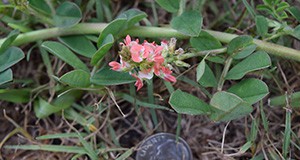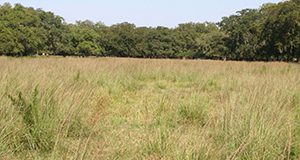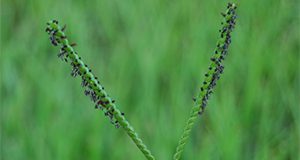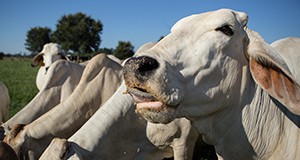This 4-page document provides an overview of smutgrass biology, control, and general recommendations. Written by Brent Sellers, Neha Rana, José Luiz C. S. Dias, and Pratap Devkota, and published by the UF/IFAS Agronomy Department, revised October 2020.
https://edis.ifas.ufl.edu/aa261
Tag: Florida pastures
Bahiagrass (Paspalum notatum Flueggé): Overview and Pasture Management
This 10-page document discusses bahiagrass forage cultivars, forage production, nutritive value, animal performance, planting, pasture renovation, management, and more. Written by Marcelo Wallau, Joao Vendramini, José Dubeux, and Ann Blount, and published by the UF/IFAS Agronomy Department, revised July 2019.
http://edis.ifas.ufl.edu/ag342
Overseeding Rhizoma Perennial Peanut Pasture and Hay Fields during the Cool Season
Hay and livestock producers want to know if they can overseed their rhizoma peanut fields with cool-season forages during rhizoma perennial peanut dormancy. This new 5-page document discusses overseeding for hay and overseeding for grazing. Written by Jose Dubeux, Cheryl Mackowiak, Ann Blount, David Wright, and Luana Dantas, and published by the UF/IFAS Agronomy Department, January 2019.
http://edis.ifas.ufl.edu/ag426
Mycotoxins in Florida Pastures
Beef cattle producers in Florida have expressed concerns about the potential presence of mycotoxins in summer perennial forages. In other regions of the US, mycotoxins in forage crops have caused productivity and economic losses. This 3-page fact sheet provides information about the current state of knowledge regarding mycotoxins in Florida perennial grass pastures. Written by Marcelo Wallau, Brittany Justesen, Ann Blount, Luiz Ferraretto, Glen Aiken, and Aaron Stam, and published by the UF/IFAS Agronomy Department, August 2018.
http://edis.ifas.ufl.edu/ag422
Creeping Indigo, A Poisonous Plant of Concern in Florida Pastures
 A recent rise in suspected horse poisonings has brought new attention to creeping indigo (Indigofera spicata), a toxic plant which has reportedly been in Florida for as long as 90 years. This new 5-page fact sheet covers plant description, signs of creeping indigo toxicity, and roles of creeping indigo’s toxins, as well as treatment and management. Written by Robert MacKay, Ed Jennings, Brent Sellers, Jason Ferrell, and Amanda House, and published by the UF Department of Agronomy, August 2015.
A recent rise in suspected horse poisonings has brought new attention to creeping indigo (Indigofera spicata), a toxic plant which has reportedly been in Florida for as long as 90 years. This new 5-page fact sheet covers plant description, signs of creeping indigo toxicity, and roles of creeping indigo’s toxins, as well as treatment and management. Written by Robert MacKay, Ed Jennings, Brent Sellers, Jason Ferrell, and Amanda House, and published by the UF Department of Agronomy, August 2015.
http://edis.ifas.ufl.edu/ag399



